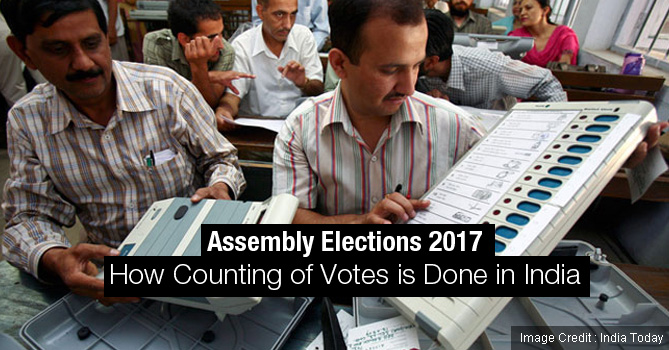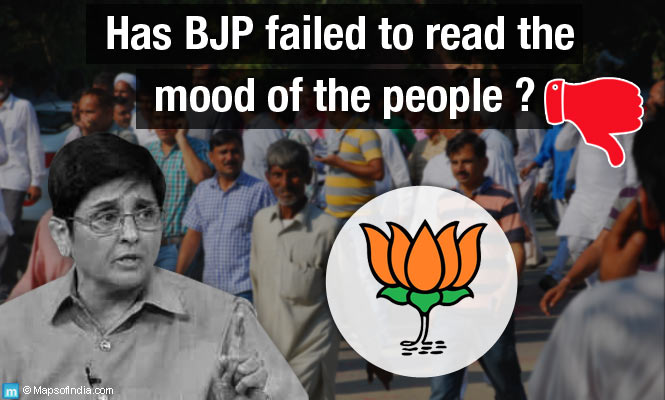As vote counting is going on. it is important to understand the procedure. India is a democracy, and the leaders of the country are just representatives of the people of India who have been selected by the latter to carry out the duties for the betterment of the citizens. Thus, it is absolutely essential that the correct and proper counting of votes be done after an election so that the right choice of the electorate finds expression.
Counting of votes is the last phase of any election process. The importance of this phase cannot to be emphasised enough, for any discrepancy will result in the wrong person coming into power. Here is the procedure of counting votes in India in a nutshell.
As per Indian laws, the counting of votes is done under the supervision and direction of the Returning Officer of the Constituency, in the presence of the candidates and their agents. Counting may be done in more than one place and also at more than one table in the same place. Each candidate appoints a counting agent from his/her party to take care of the interests of the party by observing and keeping a watch. There are two systems of counting votes:
Counting of votes, polling station-wise:
- In this system, individual polling stations count the ballot papers casted there.
- The votes polled by each candidate are then declared separately by each polling station of the constituency.
Counting votes by mixing the ballot papers of entire assembly constituency:
- The ballots cast in the entire assembly constituency or an assembly segment get mixed together.
- The counting is then done candidate-wise.
- This system safeguards from highlighting the voting trends of a particular area, which in turn may intimidate voters into going against their own personal choice of candidate.
- This system is followed in those constituencies which are specifically notified by the Election Commission under Rule 59A of the Conduct of Elections Rules, 1961.
The Final Phase
- The Returning Officer gives notice to the candidate or their election agent, at least one week before, as to the date fixed for the poll.
- He also has to include in the notice the place, date and time fixed for the counting of the votes, in the forms prescribed by the Commission for the purpose, vide Appendix XXIV A or XXIV B as may be applicable.
- Generally, the rule followed is that the date for counting of votes is the last date of polls in the State.
- If for some reason the Returning Officer (RO) is unable to proceed with the counting of votes at the said date, place and time, he has the authority to postpone the counting and fix a new date and time, if necessary at another place, for counting of votes.
- Notice regarding the same has to be given to the candidates and their respective election agents.
The procedure for counting votes is as follows:
- Only the RO, the candidates with their respective election agents, counting agents, public servants on duty and authorised Election Commission Agents are allowed in the vicinity where votes are being counted.
- The Electronic Voting Machines (EVM) are inspected by the counting staff and agents before the counting begins.
- Postal Ballot (PB) papers are counted first.
- The counting of EVM votes begins 30 minutes after the PB counting starts.
- After counting of one round is over the EVMs are resealed.
- After every round the RO pauses for two minutes during which the candidate or the election agent can ask for a recount.
- RO decides if recount request is valid and acts accordingly.
- Following resolution of discrepancies the RO seeks the Observers’ clearance and announces result.
- The final result in Form-20 is readied.
- The RO reports the result to the EC and appropriate authority.
The introduction of the EVM in totality since the 2004 general elections, has seen reduction in time in both casting a vote and declaring the results compared to the old paper ballot system. Added to that, bogus voting is greatly reduced as the vote is recorded only once.
In the recently held assembly elections in U.P., Punjab, Goa, Uttarakhand and Manipur, the Election Commission took exceptional precaution for proper voting to be conducted by issuing strict guidelines:
- Mobile phones were prohibited inside the counting halls.
- In addition to general observers, a micro observer was deputed at each and every counting table.
- A three-tier security arrangement was made in and around the counting centres.
- Central forces were deployed inside the counting centres.
- Local police were deployed in the outer circle.
- Forces from other states were deployed around the centres to prevent entry of any unauthorised persons.
- A senior magistrate was posted at the entrance to control the crowd and regulate the entry.
- The 100-metre area around a counting premise or campus was demarcated as pedestrian zone and no vehicles were allowed within this perimeter.
- Additional CCTV cameras were installed at locations from where the carrying of EVMs from strong rooms to the counting hall was effectively monitored.
Read More
Himachal Pradesh Assembly Election 2017
Gujarat Assembly Elections 2017






